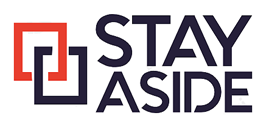In the evolving landscape of the nonprofit and charitable sector, effective staff training is a critical factor for organizational success and sustainability. One of the key ways that the board of directors can work towards a sustainable future is to foster an organizational culture that prioritizes and encourages professional development.
Supporting training for staff and volunteers can have many benefits for an organization, including enhanced skills to support the work of the mission, increased morale and job satisfaction, improved productivity and efficiency, or even greater innovation within an organization. Because of these benefits, it is in a board’s best interest to support professional development.
For boards that may be unsure of where to start, here are seven ways the board can better support staff training and development.
1. Aligning training with organizational goals.
For training and development opportunities to be most effective, boards should ensure that staff training aligns with the organization’s mission and strategic goals. Boards can create this alignment by identifying skills and knowledge gaps and identifying targeted training initiatives that enhance the organization’s effectiveness. For example, if a board has a strategy to help the organization achieve their fundraising goals, the board can support training opportunities that help staff with building donor relationships. This approach ensures that staff have the tools to connect with donors, which can enhance their fundraising efforts and the organization’s overall success.
2. Allocating resources.
While budget constraints are a common challenge in the nonprofit and charitable sector, boards that prioritize staff training should consider a professional development budget. For organizations that cannot afford to allocate financial resources within their existing budget, boards can ensure that identifying potential funding opportunities, such as grants, are part of the annual fundraising plan. Boards can also encourage a culture of fundraising specifically aimed at supporting professional development initiatives. This prioritizes continuous growth, enhancing the organization’s ability to meet its goals.
3. Creating policies that support learning and development.
One of the key responsibilities of the board is to ensure that their organization has strong policies that support a strong organizational framework. The board can then use policies as a tool to support a culture of learning and development. For example, a board can endorse policies such as time-off for training that encourage staff to pursue professional development opportunities that may take place during work hours. This allows staff to feel confident that the board supports their efforts towards continuous learning and improvement.
4. Collaborating with staff in training decisions.
Boards can support staff training by involving employees in the decision-making process regarding training programs. For example, the board can request input from staff about their training needs and preferences. This can support relationship building and trust between the board and staff, and it can also help to identify better training opportunities since staff are most connected to the front-line work of your organization’s mission.
5. Advocating for equitable access to training.
For organizations to receive the most benefit from training opportunities, it is crucial for boards to ensure they are equitable and accessible to all staff members. For example, the board can identify and address barriers that may prevent certain staff and volunteers from accessing training, such as language, or time constraints due to family obligations. In addition, the board should ensure that all staff, regardless of position, can access professional development. This leads to staff feeling valued, and ensures all workers have an opportunity to grow in their role.
6. Leveraging technology.
While there are many in-person opportunities for learning, the rise of digital learning platforms presents an excellent opportunity for nonprofits to provide training to their staff in a flexible and accessible manner. Boards can support staff training by advocating for the use of technology to facilitate workshops and training, such as webinars, virtual conferences, and on-demand courses. These options are often able to accommodate diverse learning styles and schedules.
7. Leading by example.
Board members can model a commitment to lifelong learning by engaging in their own professional development. While board members often deal with schedule constraints of their own due to obligations such as employment and caregiving, there are many opportunities for group development such as hiring a consultant to provide customized training, or webinars that can be attended remotely. This can set a strong example for staff and other volunteers that the organization truly values learning and development.
The board of directors plays an important role in leading your organization. Particularly by ensuring the organization is prepared to take on future challenges. Professional development can support the work of everyone in the organization by not only contributing to the professional growth, but also to the achievement of the mission, and ultimately creating a stronger community.
Roxanne Tackie is the co-founder of Story Point Consulting where she helps people working or volunteering at small nonprofits and charities find the right donors, effectively communicate with supporters, and strengthen relationships with them. In her spare time, she enjoys spending time with her family and friends, baking, and teaching and studying the artform of tap dance.
The views expressed in this article are the author’s alone and do not necessarily represent those of CharityVillage.com or any other individual or entity with whom the authors or website may be affiliated. CharityVillage.com is not liable for any content that may be considered offensive, inappropriate, defamatory, or inaccurate or in breach of third-party rights of privacy, copyright, or trademark.
